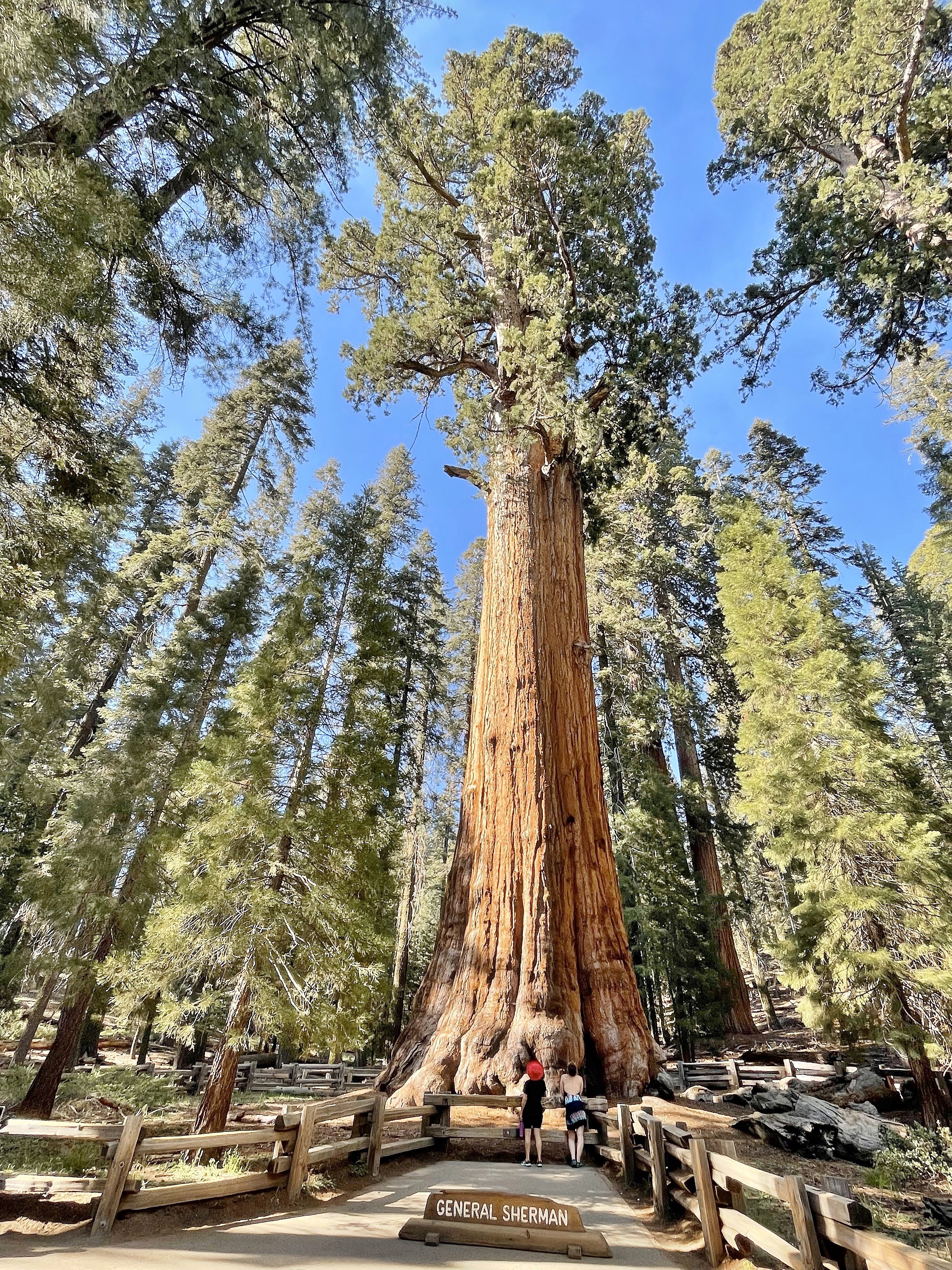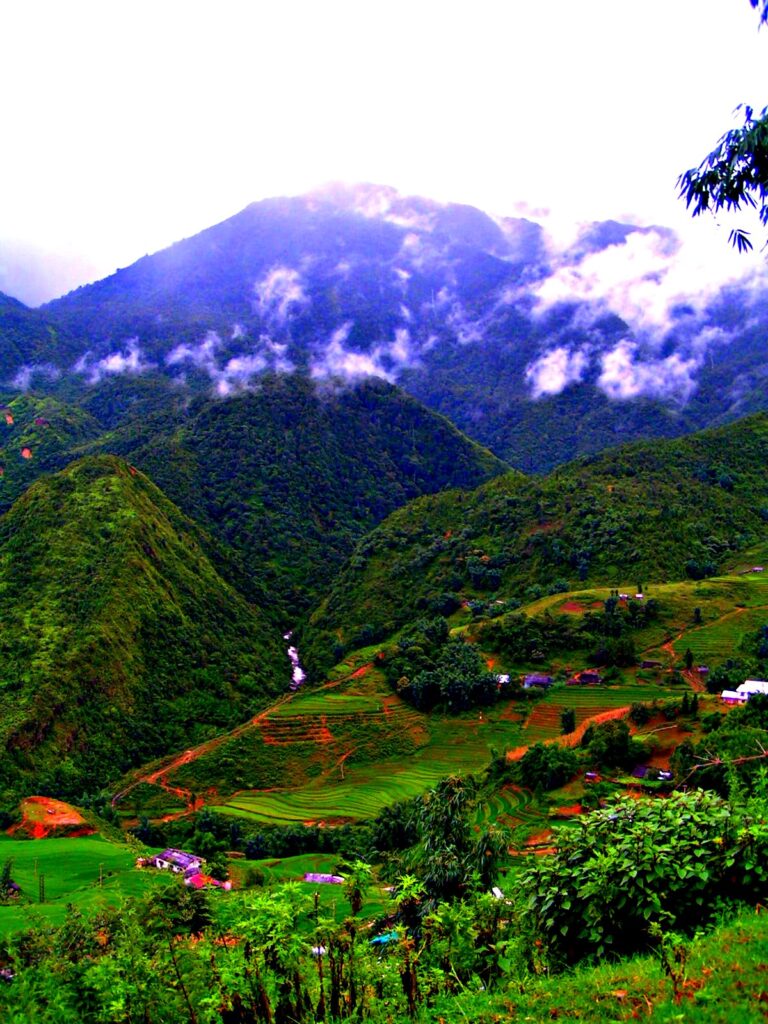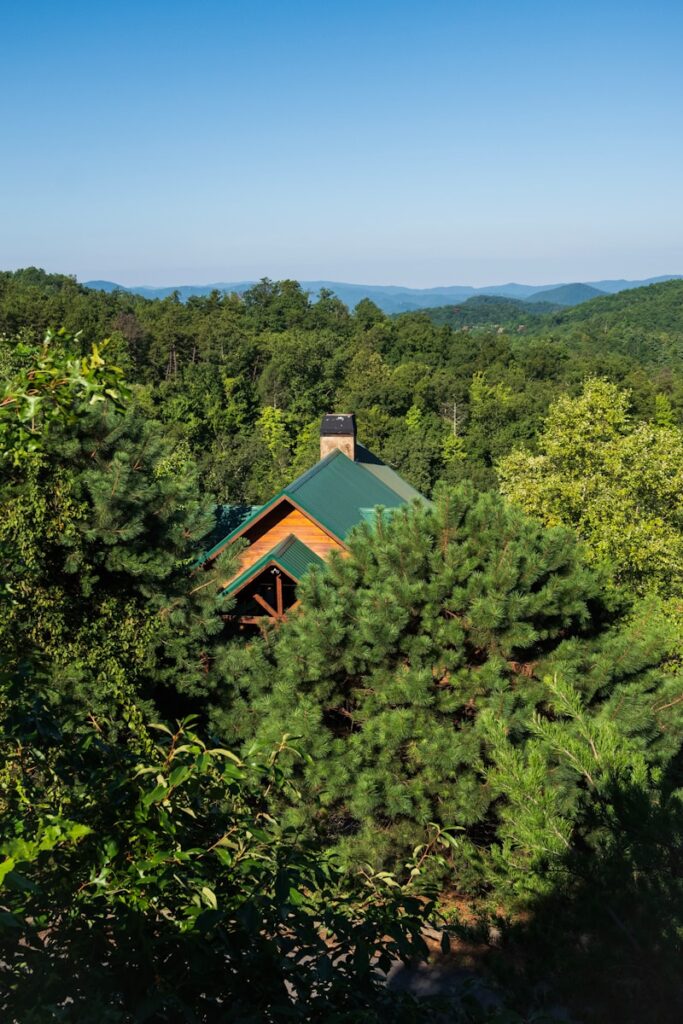
Hidden deep within the serene, protected expanse of Sequoia National Park, federal authorities recently dismantled an operation that stands as a stark testament to the ongoing vulnerabilities of America’s cherished natural landscapes. This discovery was not merely an isolated incident but a sprawling, illicit enterprise that inflicted significant damage, highlighting the persistent threats posed by organized drug trafficking within national park boundaries.
For nearly two decades, these vital ecosystems, celebrated for their monumental trees and diverse wildlife, have been quietly battling a relentless siege from sophisticated criminal networks. The recent intervention by law enforcement crews brought to light the sheer scale of the environmental degradation and the dangerous materials left behind, underscoring a complex interplay of illicit activity, resource strain, and the imperative for vigilant protection of our nation’s natural heritage.
This in-depth report delves into the specifics of this massive illegal operation, meticulously chronicling the shocking findings, the extensive damage inflicted upon the park, and the broader implications for public safety and environmental integrity. It is a narrative of discovery, destruction, and the unwavering commitment of authorities to reclaim and restore these irreplaceable wilderness areas, even as they face an uphill battle against well-entrenched criminal enterprises.

1. **Massive Illegal Marijuana Cultivation Site Uncovered**Last week, federal authorities successfully dismantled a sprawling illegal marijuana cultivation site, a sophisticated operation that had been hidden deep within the majestic Sequoia National Park in California. This significant intervention followed years of persistent efforts to combat such illicit activities within the protected wilderness, culminating in the removal of thousands of marijuana plants and a considerable amount of hazardous waste. The National Park Service (NPS) reported the scope of the operation, detailing the sheer volume of materials removed and the land area affected.
Crews meticulously extracted 2,377 mature, full-grown marijuana plants from the site, alongside approximately 2,000 pounds of trash and associated infrastructure. The operation spanned an area covering roughly 13 acres, demonstrating the extensive footprint of this illegal enterprise within the national parkland. Such an endeavor requires significant planning and resources, pointing to a highly organized effort rather than a haphazard undertaking.
This discovery highlights the persistent challenge posed by clandestine cultivation sites, which often blend into remote wilderness areas, making them difficult to detect and dismantle. The sheer scale of the operation, affecting 13 acres, suggests a long-term presence and a sustained drain on park resources, both natural and human. The environmental consequences of such a large-scale intervention are profound and multifaceted, extending far beyond the immediate removal of plants and waste.

2. **Specific Contraband and Hazards Seized**The findings at the Sequoia National Park site went far beyond just marijuana plants. Upon returning to the site this year, after an initial raid in 2024 which was not fully rehabilitated due to hazardous chemicals, NPS crews uncovered alarming evidence of dangerous items and substances. Among the contraband found was a semi-automatic pistol, indicating the potential for violence associated with such illegal operations and posing a direct threat to law enforcement rangers and park visitors.
Even more concerning was the presence of hazardous chemicals, notably approximately one gallon of Methamidophos. This highly toxic insecticide has been banned in the United States since 2009 due to its significant health risks. Methamidophos is known for its neurotoxic effects, which can severely endanger people, wildlife, and the broader environment, contaminating soil and water sources for extended periods. Its presence underscores the severe environmental and health risks associated with these illicit grows.
The removal of this material was a complex undertaking, requiring both ground crews and helicopter sling-loads due to the remote nature of the site. Much of the material was removed by hand, a testament to the dedication of the NPS law enforcement rangers and Bureau of Land Management special agents involved. The findings painted a clear picture of a sophisticated, dangerous, and environmentally destructive operation.

3. **Extensive Environmental Degradation**The impact of this illegal growing operation extended far beyond the visible plants and trash, leaving significant and lasting scars on the protected wilderness. The NPS reports detailed numerous instances of severe environmental degradation caused by the cultivators. Growers carved terraced plots directly into the hillsides, a destructive practice that alters natural topography, increases erosion, and destroys native vegetation, fundamentally changing the landscape.
Water resources, vital for the park’s ecosystems, were also severely impacted. The natural flow of water from a nearby creek was diverted, with extensive irrigation lines installed to supply water directly to the crops. Furthermore, several large pits were constructed to store this diverted water, creating unnatural reservoirs that disrupt hydrological cycles and impact aquatic habitats. This massive water diversion depletes natural sources that would otherwise nourish wildlife and park vegetation, including communities in the Central Valley that depend on clean Sierra runoff.
The cultivation activities also led to significant clearing of natural vegetation across the 13-acre area. This not only destroys habitat for native species but also contributes to soil destabilization and increases the risk of invasive species taking hold. The cumulative effect of these actions represents a profound ecological disruption, requiring extensive and costly rehabilitation efforts to restore the natural balance of the parkland.
Read more about: Used Hybrid Battery Reliability: Decoding 10 Models – The Ones That Endure and the Ones That Don’t

4. **Broader Ecological and Public Safety Threats**The environmental degradation caused by the illegal grow operation in Sequoia National Park extends far beyond its immediate 13-acre footprint, posing broader ecological and public safety threats. Runoff from the site, contaminated by the large variety of pesticides used in growing marijuana, likely exposed both park visitors and wildlife to toxic materials. These chemicals can seep into the soil, leach into groundwater, and flow into creeks, affecting the entire food chain.
The siphoning of creeks to supply water for both the crops and the cultivators’ camps deprived wildlife and park vegetation of crucial water resources. Each marijuana plant can consume six to eight gallons of water per day, according to the California Department of Fish and Wildlife. This substantial water usage, especially during dry seasons, can severely stress ecosystems, impacting everything from small insects to large predators that depend on these natural water sources for survival.
Beyond environmental contamination, the presence of such operations introduces significant public safety risks. Park visitors could unknowingly stumble upon dangerous individuals or hazardous materials, including the semi-automatic pistol found at this site. The remote locations and the presence of armed individuals involved in drug trafficking create a perilous environment, making these areas unsafe for recreational use and posing a constant threat to law enforcement and park staff.
Read more about: Ever Wondered How You Grew Up? We’re Breaking Down the Wild Ride of Child Development!

5. **Evidence of Organized Drug-Trafficking**Authorities assert that the cultivation site in Sequoia National Park bore the unmistakable hallmarks of a well-organized drug-trafficking operation. This incident is not an isolated occurrence but is indicative of a systemic problem that has plagued Sequoia and Kings Canyon National Parks for nearly two decades. The sophistication of the infrastructure, the use of banned chemicals, and the sheer volume of plants strongly suggest the involvement of organized criminal networks rather than independent growers.
Over the past twenty years, officials have eradicated close to 300,000 plants worth an estimated $850 million inside these two parks. This staggering figure underscores the persistent and extensive nature of these illicit operations and the significant financial incentives driving them. The consistent pattern of environmental damage and the scale of the operations point to a coordinated strategy by criminal organizations to exploit remote public lands for large-scale drug production.
The presence of makeshift campsites with kitchen areas further supports the conclusion of an organized operation, implying that individuals were living on-site for extended periods to manage the grow. Such a sustained presence requires logistical support and coordination, characteristics of sophisticated drug-trafficking networks. The challenges posed by these organizations necessitate a robust and continuous law enforcement response to protect these invaluable natural resources.

6. **Additional Illicit Activities Documented**Beyond the primary activity of marijuana cultivation, rangers documented evidence of several other illicit activities at the Sequoia National Park site, indicating a broader disregard for park regulations and environmental protection. During their reconnaissance, NPS rangers observed clear signs of poaching, an illegal activity that depletes wildlife populations and disrupts delicate ecological balances. The presence of such evidence further complicates the restoration efforts and points to a multi-faceted criminal enterprise.
In addition to the cultivation plots, the operation involved the clearing out of natural vegetation beyond the immediate grow areas. This extensive deforestation further exacerbates habitat loss and soil erosion, harming the park’s biodiversity. The environmental impact is not limited to the immediate cultivation zone but extends to surrounding areas where support activities or expansion efforts took place.
The perpetrators also created nearly two miles of illegal trails, carved into the wilderness. These unauthorized trails facilitate access for the illicit operation but also fragment habitats, introduce invasive species, and create erosion pathways. Furthermore, development of campsites and kitchen areas in a wilderness zone is a clear violation of park rules, showing a prolonged human presence and further stressing the natural environment. These findings illustrate a complete lack of respect for the protected status of the park.
Read more about: A Perilous Miscalculation: When Pirates Attacked the Unyielding Power of Warships and Faced Swift Defeat

7. **Ongoing Investigation and Law Enforcement Response**The extensive nature of the illegal operation in Sequoia National Park required a significant and sustained law enforcement response. Authorities first detected and raided this specific cultivation site in 2024. However, the site could not be entirely rehabilitated at that time due to the presence of hazardous chemicals, highlighting the dangers and complexities involved in these operations. The full removal and cleanup only occurred this year, a testament to the careful planning required to mitigate risks.
Despite the magnitude of the operation and the detailed findings, no arrests have been made in connection with this particular incident, and the investigation remains ongoing. This underscores the challenges faced by law enforcement in apprehending those responsible for these often-remote and well-concealed enterprises. The individuals involved are frequently transient, and the networks are designed to be difficult to penetrate.
To aid in their efforts, authorities have issued a public appeal for information. Anyone with details about illegal cultivation on park land is encouraged to call the NPS tip line at 888-653-0009. This ongoing investigation exemplifies the determination of federal agencies to protect America’s natural parks, even as they confront sophisticated criminal organizations and the pervasive environmental and safety challenges they present.
While the illicit operation in Sequoia National Park highlights an immediate, critical threat to America’s natural heritage, it also brings into sharp focus a broader, more insidious challenge confronting the nation’s protected lands. This recent discovery underscores a systemic vulnerability stemming from severe budgetary constraints, profound staffing crises, and policy shifts that collectively threaten the foundational principles of conservation, visitor experience, and public safety across the entire U.S. National Park system. The struggles faced by Sequoia are not isolated; they are symptomatic of a nationwide strain on the very institutions tasked with safeguarding these invaluable natural treasures for future generations. These systemic issues represent a quiet erosion of the protective mechanisms designed to keep parks resilient, accessible, and safe. Their cumulative impact threatens to fundamentally alter the landscape of America’s public lands, making them more susceptible to exploitation and environmental degradation. The following analysis delves into these overarching challenges, exploring their origins, their manifestations, and their far-reaching implications for the future of our national parks. It is a critical examination of the pressures that extend far beyond individual incidents, demanding a comprehensive understanding of the forces at play. This wider context provides a sobering backdrop to the dedicated efforts of rangers and agents on the ground, revealing the uphill battle they face.
Read more about: Kamala Harris: A Comprehensive Review of Her Defining Political Hurdles and Encounters with Security Challenges

8. **Severe Budget Cuts and Their Devastating Impact**Among the most pressing systemic challenges facing U.S. National Parks is the alarming reduction in federal funding. The Trump administration’s 2026 budget plan, unveiled on May 2, proposed a staggering cut of more than $1 billion from the National Park Service (NPS). If enacted, this reduction would represent the largest in the agency’s 109-year history, fundamentally jeopardizing the protection, maintenance, and operational capacity of the country’s more than 430 national park sites.
Such a substantial decrease in funding carries profound consequences for the core mission of the NPS. The National Parks Conservation Association (NPCA) has calculated that a budget reduction of this magnitude could equate to the loss of at least 350 park sites. The administration has suggested that these sites could be offloaded onto states, raising concerns about fragmented management and inconsistent standards across previously unified protected areas.
Theresa Pierno, President and CEO of NPCA, articulated the gravity of these proposed cuts, stating that the budget proposal “strikes at the heart of who we are as a nation.” She further contended that the administration’s actions do not align with public sentiment, asserting that “Americans love their national parks and want to see them protected, but this administration’s actions do not match the will of the people. This administration is trying to dismantle the Park Service from the inside out.”
The proposed budget reductions exacerbate an already precarious financial situation within the national park system. Parks are described as being “stretched thin,” operating with a “Band-Aid approach” even as they remain “dangerously underfunded and understaffed.” This financial strain creates a cascading effect, limiting the ability of the NPS to address critical infrastructure needs, conservation initiatives, and public safety requirements.
Read more about: 9 Producers Who Wrecked Their Studios Over One Over-Budget Flop: A Deep Dive into Hollywood’s Costly Mistakes

9. **Staffing Crisis and Mass Terminations**Compounding the budgetary challenges is an escalating staffing crisis that has led to widespread terminations and a significant reduction in the workforce dedicated to protecting and managing national parks and forests. Mass terminations, first announced on February 14, reportedly resulted in approximately 1,000 National Park Service staff—5% of its workforce—being forced out of their positions. The U.S. Forest Service, which oversees thousands of miles of hiking trails, experienced an even more severe impact, with about 3,400 employees, representing 10% of its staff, being terminated.
Official data from the Department of the Interior’s own workforce database corroborates this trend, revealing a substantial decline in personnel. The figures show 16.5% fewer total employees and a striking 39% fewer seasonal employees in the current fiscal year compared to fiscal year 2023. This depletion of human resources comes at a critical time, particularly as many parks enter peak visitation season, necessitating increased vigilance and operational support.
The immediate effects of these staffing cuts have been visible to the public. Visitors to popular sites like Grand Canyon National Park experienced unusually long queues of cars over President’s Day weekend, directly attributed to a lack of toll operators at the gates. Similarly, a popular trail outside Seattle was indefinitely closed only hours after the cuts were announced, with signage explicitly citing the “large scale termination of Forest Service employees” as the reason for closure.
These reductions have not gone unnoticed by those affected. At Yosemite National Park, a protest involving the display of an upside-down American flag was reported, signifying distress over the deep staff cuts. Andria Townsend, a carnivore biologist who supervised a team of eight at Yosemite before her termination by email, publicly expressed her “100%” support for such protests, emphasizing their role in bringing critical attention to the issue.

10. **Implications for Conservation Efforts and Endangered Species**The reduction in park and forest service personnel directly threatens ongoing conservation efforts, particularly those focused on endangered species and ecological integrity. Andria Townsend, the former carnivore biologist at Yosemite, voiced significant concern for the future of the endangered species she had been dedicated to protecting, including the Sierra Nevada red fox and the Pacific fisher, a relative of the badger.
These species are in perilous situations, with only about 50 Pacific fishers and 500 Sierra Nevada red foxes remaining in the wild. Ms. Townsend’s work involved critical research, such as attaching GPS collars to track and preserve these populations. The termination of staff conducting similar research at a sister site further compounds the challenge, casting a shadow of uncertainty over the survival prospects of these critically vulnerable animals. As Ms. Townsend remarked, “The future of conservation just feels very uncertain.”
Beyond specific species, the cuts undermine broader ecological management. Kate White, a wilderness ranger with nine years of experience, expressed concerns about maintaining backcountry toilets in the sensitive alpine wilderness of the Enchantments in Washington state. These facilities, servicing over 100,000 visitors annually, require helicopter maintenance, and a lack of proper servicing could lead to significant environmental damage to the ecosystem.
Further weakening conservation efforts are broader funding cuts that affect scientific research and stewardship. The Trump administration reportedly moved to cut dozens of National Park Service grants totaling $26 million, which were earmarked for vital initiatives such as water quality research, archaeological monitoring, and Tribal stewardship. Such actions, according to the NPCA, “would weaken conservation efforts across the National Park System,” diminishing the agency’s long-standing leadership in environmental science.
Read more about: Massachusetts: A Comprehensive Look at the Bay State’s Enduring Legacy, Economic Evolution, and Forward-Thinking Initiatives

11. **Deterioration of Visitor Experience and Public Safety**The systemic challenges are also tangibly eroding the quality of the visitor experience and raising serious concerns about public safety within national parks and forests. Visitors are increasingly encountering “longer park entrance lines, reduced hours at visitor centres, trails closed and dirty public facilities,” according to reports. These operational shortcomings directly diminish the quality of engagement that millions expect from their visits to these national treasures.
Public safety, a paramount responsibility of park staff, is now under heightened risk. Kate White, reflecting on her former role as a wilderness ranger, highlighted her team’s crucial function in keeping people safe and being “first on scene if something were to happen” in remote and often dangerous terrain. She had comforted individuals facing life-threatening injuries and recovered bodies of hikers, illustrating the critical nature of these now-eliminated roles. Without such personnel, the ability to respond to emergencies effectively is severely compromised.
Infrastructure maintenance, vital for safe access, has also suffered. Hurricane damage to sections of the Appalachian Trail, a 2,200-mile route, will not be repaired in time for through-hikers. This failure to address essential repairs not only inconveniences recreational users but also creates hazardous conditions, limiting access and potentially endangering those who attempt to navigate damaged sections.
John Garder of the National Parks Conservation Association in Washington D.C. summarized the prevailing sentiment among outdoor advocates: “If the administration doesn’t reverse these policies, visitors are going to need to lower their expectations.” This advice underscores a troubling shift, suggesting that the immersive and safely managed experiences traditionally associated with national parks may become increasingly rare under current resource constraints.
Read more about: America’s Roughest Rides: Ranking the States with the Worst Highways

12. **Policy Shifts and Threat to Historical Narratives**Beyond budgetary and staffing issues, the Trump administration has introduced policy shifts that directly challenge the integrity of historical interpretation within national parks. Secretary of the Interior Doug Burgum issued Secretarial Order 3431 in mid-May, which mandates bureaus under the Department of the Interior, including the National Park Service, to post signage at all sites. This signage instructs visitors to identify and report “any signs or other information that are negative about either past or living Americans.”
This order implements provisions outlined in President Trump’s “Restoring Truth and Sanity to American History” executive order. The directive sets clear timelines for land management bureaus to review, identify, and remove “images, descriptions, depictions, messages, narratives or other information (content) that inappropriately disparages Americans past or living (including persons living in colonial times).” It also targets content describing natural features that “emphasizes matters unrelated to the beauty, abundance, or grandeur of said natural feature.”
The implication of such a policy is to prioritize a particular narrative of American history, potentially at the expense of comprehensive and accurate historical accounts. This approach aims to curate content that exclusively highlights positive portrayals, thereby sanitizing complex historical events and figures that are integral to understanding the nation’s past.
Theresa Pierno of the NPCA strongly criticized this order, asserting that it “sets a dangerous precedent of prioritizing nostalgia over truth at our parks.” She further cautioned that such a directive could have a “chilling effect on rangers just trying to do their jobs,” suggesting that park historians and interpreters might feel pressured to suppress information that does not align with the prescribed positive narrative. “When the Trump administration tries to rewrite American history, it is the American people who will suffer most,” Pierno stated.
Read more about: 60s Movie Stars Who Vanished After Their Big Break: A Deep Dive into the Decade’s Most Mysterious Exits

13. **Reversal of Environmental Protections (Single-Use Plastics)**Another significant policy reversal impacting environmental protection within national parks concerns the use of single-use plastics. For several years, environmental advocacy groups, including the NPCA, campaigned for the elimination of the sale and distribution of items such as food and beverage containers, bottles, straws, cups, cutlery, and disposable plastic bags within park boundaries. These efforts culminated in the Biden administration’s June 2022 order to phase out all single-use plastics on Department of the Interior-managed lands by 2032.
The rationale behind this initiative was compelling, rooted in the widespread recognition that plastic pollution poses severe threats to birds and wildlife, negatively impacts water quality, and ultimately contributes to the growing crisis of oceanic plastic contamination. The phased elimination aimed to mitigate these environmental harms and promote more sustainable practices within the nation’s protected areas.
However, Interior Secretary Doug Burgum reversed this order on May 20. Citing “operational and logistical challenges,” the decision effectively halted the planned phase-out. This reversal signals a departure from a policy designed to reduce the ecological footprint of park visitors and operations, particularly as plastic waste remains a persistent environmental concern across various ecosystems.
Critics argue that the stated reasons for the reversal are questionable, given that some concessioners in parks like Yosemite had already successfully eliminated the use of single-use plastics. Sarah Gaines Barmeyer, NPCA’s deputy vice president for conservation programs, noted that “it can be done.” Furthermore, the decision runs contrary to public opinion, with an NPCA wildlife poll indicating that a vast majority of Americans—82%—believe that reducing or eliminating single-use plastics in national parks helps protect marine wildlife, and 92% support reducing water pollution for the same reason.

14. **Broader Economic and Fire Safety Concerns**The repercussions of these systemic challenges extend beyond conservation and visitor experience, reaching into broader economic spheres and critical public safety concerns, notably wildfire management. Private businesses that operate in and around national parks, heavily reliant on a steady flow of visitors, stand to lose billions of dollars if deteriorating conditions and reduced services deter tourism. This economic ripple effect underscores the interdependence between park health and local economies.
Perhaps most critically, the absence of park and forest service personnel poses a significant and growing threat to wildfire fighting capabilities, particularly during the dry season. Many of the terminated roles are “completely crucial” to fire safety, as highlighted by Dan Hilden, a wildland firefighter. While wildland firefighters have largely been exempted from recent cuts, the support staff who perform essential functions are not.
These support roles include tasks such as “sweeping” backcountry trails, which involves entering remote wilderness areas to ensure that all individuals have evacuated and are out of harm’s way before expanding fires become uncontrollable. Such operations often require several days of travel into the wilderness, underscoring the specialized knowledge and physical presence required from park and forest service personnel.
Hilden’s assessment paints a stark picture of a worsening situation: “Every year things have been getting worse as the staffing issues go. This year is going to be a lot worse.” The depletion of support staff not only hampers preventive measures and initial response but also complicates the logistical and safety aspects of managing large-scale wildfires, presenting a compounding risk to both the fragile ecosystems of national parks and the lives of those who protect them.
Read more about: Engine of Regret: 14 Car Models That Left Owners Begging for a Trade-In – A Data-Driven Warning
The complex web of an illicit marijuana operation, as revealed in Sequoia National Park, is a microcosm of the broader challenges confronting America’s cherished natural landscapes. From severe budget cuts crippling the National Park Service’s capacity to protect and maintain these areas, to staffing crises that leave critical conservation efforts and public safety initiatives dangerously under-resourced, the systemic pressures are undeniable. Policy shifts that threaten to rewrite history or reverse environmental gains only further erode the foundation of these protected spaces. The collective impact of these forces—budgetary, human, and ideological—demands urgent and comprehensive attention. Without a renewed commitment to funding, staffing, and science-based policy, the long-term integrity and accessibility of America’s national parks, which stand as testaments to the nation’s natural splendor and historical depth, remain perilously vulnerable. The ongoing struggle to reclaim and restore these vital natural resources requires not just an immediate response to individual threats, but a sustained, overarching strategy to safeguard their future against the formidable challenges they now face.



